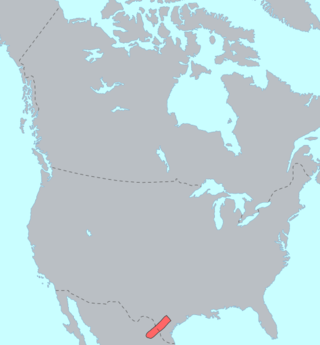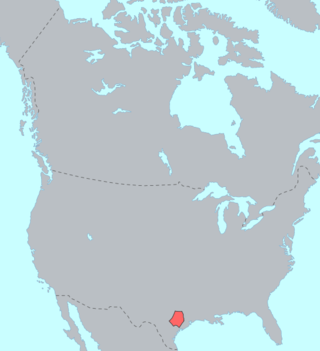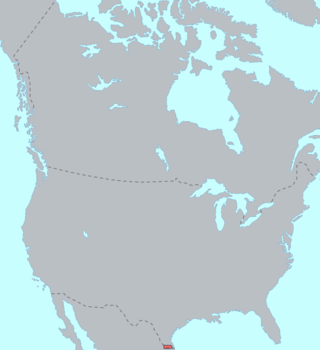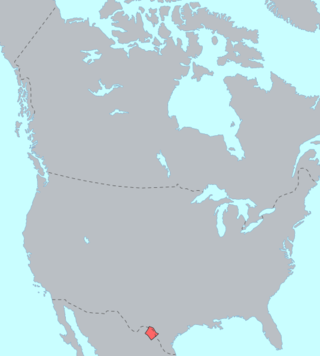Related Research Articles

The Indigenous languages of the Americas are the languages that were used by the Indigenous peoples of the Americas before the arrival of non-Indigenous peoples. Over a thousand of these languages are still used today, while many more are now extinct. The Indigenous languages of the Americas are not all related to each other, instead they are classified into a hundred or so language families, as well as a number of extinct languages that are unclassified due to the lack of information on them.

The Hokan language family is a hypothetical grouping of a dozen small language families spoken mainly in California, Arizona, and Baja California.

Amerind is a hypothetical higher-level language family proposed by Joseph Greenberg in 1960 and elaborated by his student Merritt Ruhlen. Greenberg proposed that all of the indigenous languages of the Americas belong to one of three language families, the previously established Eskimo–Aleut and Na–Dene, and with everything else—otherwise classified by specialists as belonging to dozens of independent families—as Amerind. Due to a large number of methodological flaws in the 1987 book Language in the Americas, the relationships he proposed between these languages have been rejected by the majority of historical linguists as spurious.

Uto-Aztecan, Uto-Aztekan or Uto-Nahuatl is a family of indigenous languages of the Americas, consisting of over thirty languages. Uto-Aztecan languages are found almost entirely in the Western United States and Mexico. The name of the language family was created to show that it includes both the Ute language of Utah and the Nahuan languages of Mexico.
Coahuiltecan was a proposed language family in John Wesley Powell's 1891 classification of Native American languages. Most linguists now reject the view that the Coahuiltecan peoples of southern Texas and adjacent Mexico spoke a single or related languages. Coahuiltecan continues to be a convenient collective term for the languages and people of this region.

Comecrudan refers to a group of possibly related languages spoken in the southernmost part of Texas and in northern Mexico along the Rio Grande of which Comecrudo is the best known. These were spoken by the Comecrudo people. Very little is known about these languages or the people who spoke them. Knowledge of them primarily consists of word lists collected by European missionaries and explorers. All Comecrudan languages are extinct.
Comecrudo is an extinct Pakawan language of Mexico. The name Comecrudo is Spanish for "eat-raw"; Carrizo is Spanish for "reed". It was best recorded in a list of 148 words in 1829 by French botanist Jean Louis Berlandier. It was spoken on the lower Rio Grande near Reynosa, Tamaulipas, in Mexico. Comecrudo has often been considered a Coahuiltecan language although most linguists now consider the relationship between them unprovable due to the lack of information.
Garza is an extinct Pakawan language of Texas and Mexico. It is known from two tribal names and twenty-one words recorded from the chief of the Garza by Jean-Louis Berlandier in 1828. At that time, the Garza all spoke Spanish and were acculturated. The Garza may have been the same as the Atanguaypacam tribe recorded in 1748. The Garza were called Meacknan or Miákan by the neighboring Cotoname while they called the Cotoname Yué. Garza is Spanish for "heron."

Coahuilteco was one of the Pakawan languages that was spoken in southern Texas and northeastern Coahuila (Mexico). It is now extinct.
Harry Hoijer was a linguist and anthropologist who worked on primarily Athabaskan languages and culture. He additionally documented the Tonkawa language, which is now extinct. Hoijer's few works make up the bulk of material on this language. Hoijer was a student of Edward Sapir.

The Tonkawa language was spoken in Oklahoma, Texas, and New Mexico by the Tonkawa people. A language isolate, with no known related languages, Tonkawa has not had L1 speakers since the mid 1900s. Most Tonkawa people now only speak English, but revitalization is underway.

Cotoname was a Pakawan language spoken by Native Americans indigenous to the lower Rio Grande Valley of northeastern Mexico and extreme southern Texas. Today it is extinct.

Solano is an unclassified extinct language formerly spoken in northeast Mexico and perhaps also in the neighboring U.S. state of Texas. It is a possible language isolate.

Alexis Manaster Ramer is a Polish-born American linguist.

Quinigua (Kiniwa) is an extinct language that was spoken in northeastern Mexico. Quinigua was spoken between the Sierra Madre Oriental and the Sierra Tamaulipa la Nueva, and between the Rio Grande and the Rio del Pilón Grande. It has no apparent relatives and remains unclassified.

Waikuri is an extinct language of southern Baja California spoken by the Waikuri or Guaycura people. The Jesuit priest Baegert documented words, sentences and texts in the language between 1751 and 1768.
Aranama (Araname), also known as Tamique, is an extinct unclassified language of Texas, USA. It was spoken by the Aranama and Tamique peoples at the Franciscan mission of Espíritu Santo de Zúñiga. It is only known from a two-word phrase from a non-native speaker: himiána tsáyi 'give me water!'. Variations on the name are Taranames, Jaranames ~ Xaranames ~ Charinames, Chaimamé, Hanáma ~ Hanáme.

Southern Athabaskan is a subfamily of Athabaskan languages spoken primarily in the Southwestern United States with two outliers in Oklahoma and Texas. The languages are spoken in the northern Mexican states of Sonora, Chihuahua, Coahuila and to a much lesser degree in Durango and Nuevo León. Those languages are spoken by various groups of Apache and Navajo peoples. Elsewhere, Athabaskan is spoken by many indigenous groups of peoples in Alaska, Canada, Oregon and northern California.

The Coahuiltecan were various small, autonomous bands of Native Americans who inhabited the Rio Grande valley in what is now northeastern Mexico and southern Texas. The various Coahuiltecan groups were hunter gatherers. First encountered by Europeans in the 16th century, their population declined due to European diseases, slavery, and numerous small-scale wars fought against the Spanish, criollo, Apache, and other Indigenous groups.
The Comecrudo people were an Indigenous people of Mexico, who lived in the northern state of Tamaulipas. They were a Coahuiltecan people.
References
- 1 2 Ramer, Alexis Manaster (1996). "Sapir's Classifications: Coahuiltecan". Anthropological Linguistics. 38 (1): 1–38. ISSN 0003-5483. JSTOR 30028442.
- 1 2 3 4 Swanton, John. 1940. Linguistic material from the tribes of southern Texas and northern Mexico.
- ↑ Hoijer, Harry. 1949. An analytical dictionary of the Tonkawa language. University of California publications in linguistics, 5(1). Berkeley: University of California Press.
- ↑ Swanton, John R. 1940. Linguistic material from the tribes of Southern Texas and Northeastern Mexico. (Bureau of American Ethnology Bulletin 127). Washington: Government Printing Office.
- ↑ Gursky, Karl-Heinz (October 1964). "The Linguistic Position of the Quinigua Indians". International Journal of American Linguistics. The University of Chicago Press. 30 (4): 325–327. doi:10.1086/464792. JSTOR 1263527. S2CID 143736051.
- ↑ del Hoyo, Eugenio. 1960. Vocablos de la Lengua Quinigua de los Indios Borrados del Noreste de México. Anuario del Centro de Estudios Humanisticos, Universidad de Nuevo León 1. 489-515.
- ↑ Weitlaner, Roberto J.. 1948. Un Idioma Desconocido del Norte de México. In Actes du XXVIII Congrès International de Américanistes, 205-227. Paris.
- ↑ Hoijer, Harry. 1949. An analytical dictionary of the Tonkawa language. University of California publications in linguistics, 5(1). Berkeley: University of California Press.